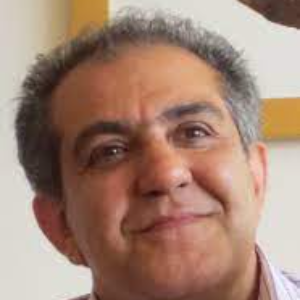Title : Role of the optimal dynamic state and stabilized catalytic complex for rational design of pharmaceutical enzymes: Engineering of streptokinase with enhanced, fibrin-dependent activity
Abstract:
Plasminogen activators (PAs), compounds that convert the blood plasminogen (Pg: inactive proenzyme) to plasmin (Pm: active enzyme) are used in the treatment of thrombotic disorders like myocardial infarction. Streptokinase (SK), the first and most utilized PA, is produced by groups A, C, and G streptococci (GAS/GCS/GGS, respectively). SKs are heterologous proteins showing different protein sequences and PA potencies. Despite several shortcomings, SK is the most cost-effective fibrinolytic drug in specially developing countries and continuous efforts are undertaken to improve its thrombolytic characteristics by protein engineering approaches.
Using conventional microbial/biochemical assays, we recently screened a GGS which was used for isolation of the gene and production of the recombinant SK protein (SKG 132). Kinetic and sequencing analyses indicated higher levels of fibrin-dependent proteolytic activities for SKG132 [Kcat/KM (min-1/µM) of 17.38 vs. 10.56] and four natural residual substitutions (Ile33Phe, Arg45Gln, Asn228Lys, Phe287Ile) compared to that of the standard SK from GCS (SKC 9542). Using computational approaches and the available crystal structure of SK.μPm complex (PDB code of 1BML at 2.9 Å resolutions), SKC.μPm complex was modeled and validated by several online servers. Subsequently, SKG132.μPm structure was constructed by altering the corresponding residual substitutions. Results of three independent molecular dynamics (MD) simulations showed increased RMSF values for SKG132.μPm, indicating the enhanced structural flexibility compared to SKC.μPm, specially in residual region of “224-229”. In parallel, the average number of Hydrogen bonds especially in Asn228Lys of SKG132 compared to that of the SKC was decreased. Accordingly, residue interaction networks (RINs) analyses indicated that Asn228Lys might induce more level of structural flexibility by generation of free Lys256, while Phe287Ile and Ile33Phe enhanced the stabilization of the SKG132.μPm catalytic complex. Moreover, RINs analyses further indicated that substitution of Phe287 by a positively charged residue like “Lys” may further stabilize the SK.μPm complex. To explore if the substituted residues have a synergistic effect on the increased activity of the SKG132 or not, three other models harboring single or various combination of two replaced SK residues with Asn228Lys being maintained in both constructs (as an important substitution) were constructed, including: SK1(Asn228Lys), SK2 (Ile33Phe/Asn228Lys) and SK3 (Asn228Lys/Phe287Lys). MD and RINs analyses indicated the formation of a more stable complex for SK3.µPm compared to the other two constructs. For validation of the computational results, the corresponding SK molecules (SK1 to 3) with the specified substituted residues were produced by site-directed mutagenesis approach, confirmed by DNA sequencing analyses and produced in E.coli expression system as recombinant proteins and characterized. Kinetic analyses of SKs (1-3), compared with SKG132 and SKC, showed higher proteolytic activities [Kcat/Km (min-1/µM) of 12.83, 15.65 and 19.5 vs. 17.38 and 10.56, respectivelly] and also higher levels of fibrinogen-bond Pg activation [(x103 IU/mg) of 456.52±8.80, 723.40±8.82, 914.89±13.92 vs. 786.66±10.57 and 282.60±7.17, respectively) indicating more than three times enhancement of fibrin-dependent activity for SK3 compared to SKC. These results denoted the potential role of the optimal dynamic state and stabilized catalytic complex for increased PA potencies of SK which might be further employed for rational design of improved SK and other pharmaceutical enzymes.
Audience take away:
The audience will be able to expand their knowledge on
• Pharmaceutical Microbiology and Biotechnology.
• Protein engineering and how such approaches will be used to improve Pharmaceutical proteins and enzymes.
• Protein structure/function relations for rational design of pharmaceutical proteins.
• Thrombolytic drugs in general and streptokinase in specific.
• The role of the optimal dynamic state and stabilized catalytic complex for rational design of pharmaceutical enzymes
• The provided knowledge will expand the research and teaching capabilities of the audience.



